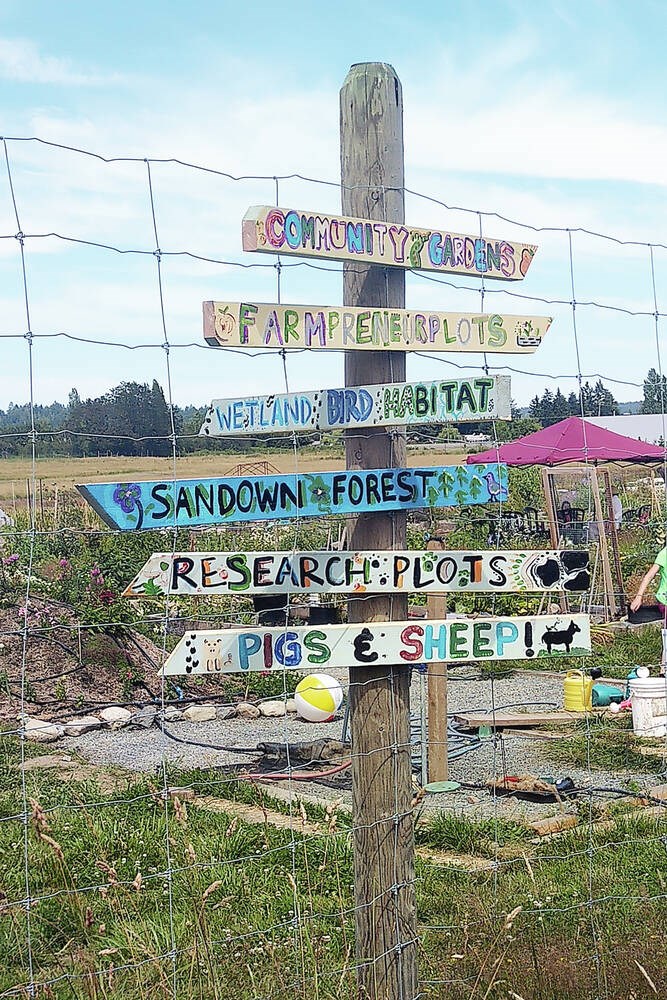Over the past two weeks, I have dug into the details of Saanich’s “four planets” ecological footprint, as calculated by CHRM Consulting.
This week, I look at the key recommmendations in the report for getting us to a “One Planet” Saanich — which, of course, is also applicable to the whole region.
However, it is worth recalling that almost half (46 per cent) of Saanich’s footprint is due to the activities of the federal and provincial governments, so while there is a lot that local governments and citizens can do to reduce our footprint, we also depend upon and must urge those governments to do their part.
The headlines from the report are:
• Our food consumption alone (24 per cent of our ecological footprint) is equivalent to one planet, with 69 per cent of that due to meat, fish, eggs and dairy consumption
• Sixty-two per cent of the transport footprint (which is 17 per cent of the ecological footprint) is due to light vehicles (mostly private) and 22 per cent is attributable to air travel
• Likewise, 62 per cent of the buildings footprint (seven per cent of the ecological footprint) is due to the energy used to operate our residential, commercial and institutional buildings
• Almost half the waste stream (which represents consumables and is six per cent of the ecological footprint) is in the category of natural fibre textiles, rubber, and non-demolition wood waste and another quarter is paper, while 12 per cent is plastic.
First, and understandably given the above, “an overarching priority for climate action is to minimize demand for energy and eliminate emissions from use of fossil fuels.” At a time when irresponsible political leaders are calling for a reduction or even elimination of the carbon tax, it is important to recognize that the tax is, as Environment and Climate Change Minister Steven Guilbeault stated a year ago, a tax on pollution.
It is also important to recall that the ecological footprint does not include methane. But numerous reports and studies have shown that liquified natural gas (LNG) is not the “clean” fuel it is marketed to be (nor is it “natural”). Indeed, once all the fugitive methane emissions from its extraction, transportation, liquefaction, further transportation and combustion are taken into account, it may be more damaging than coal, which is why moves to prevent new gas heating installations in Nanaimo, Victoria and elsewhere make sense.
Given that the largest part of the footprint (after the federal and provincial governments’ share) comes from food and food waste, an obvious way to reduce our footprint is to switch to a low meat or “flexitarian” diet, and to markedly reduce food waste at all stages along the supply chain. This should be coupled with federal and provincial initiatives to encourage and support sustainable agricultural practices, such as the recently announced Sustainable Canadian Agricultural Partnership between the federal and provincial governments.
Also noteworthy is the second goal of the B.C. Ministry of Agriculture and Food’s Service plan, which includes reference to regenerative, low-carbon farming, although there is not a single mention in the plan of either organic or ecological farming.
Locally, the Sandown Centre for Regenerative Agriculture in North Saanich points the way to “a thriving, climate change-resilient, sustainable local food system.”
With respect to making transportation more sustainable, the report states: “We can have greater impact if we go beyond switching to electric vehicles and instead focus on reducing the demand for vehicle-based travel.” Supportive policies include creating compact, walkable “15-minute neighbourhoods,” promoting electric-vehicle sharing, and creating the infrastructure for walking, biking and rolling.
When it comes to buildings, B.C.’s Step Code supports municipalities in gradually increasing the energy efficiency of buildings. Saanich, for example, adopted the Zero Carbon Step Code earlier this year and “does not recognize Renewable Natural Gas for compliance.”
Other useful measures include building smaller, multi-family, higher density homes that are more affordable, use fewer materials and require less heating and cooling.
Finally, we can reduce consumption and waste by placing more focus on sharing, re-use and repair in addition to recycling, and by buying less “stuff.”
In addition to the measures identified in the report, there are other areas of action that are not captured in the way the ecological footprint is measured. I will explore them next week.
Dr. Trevor Hancock is a retired professor and senior scholar at the University of Victoria’s School of Public Health and Social Policy



